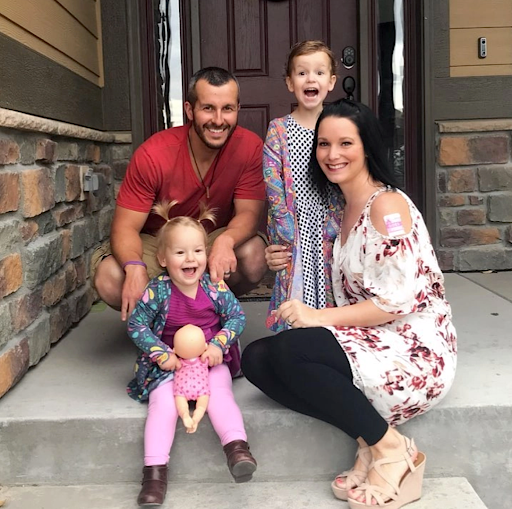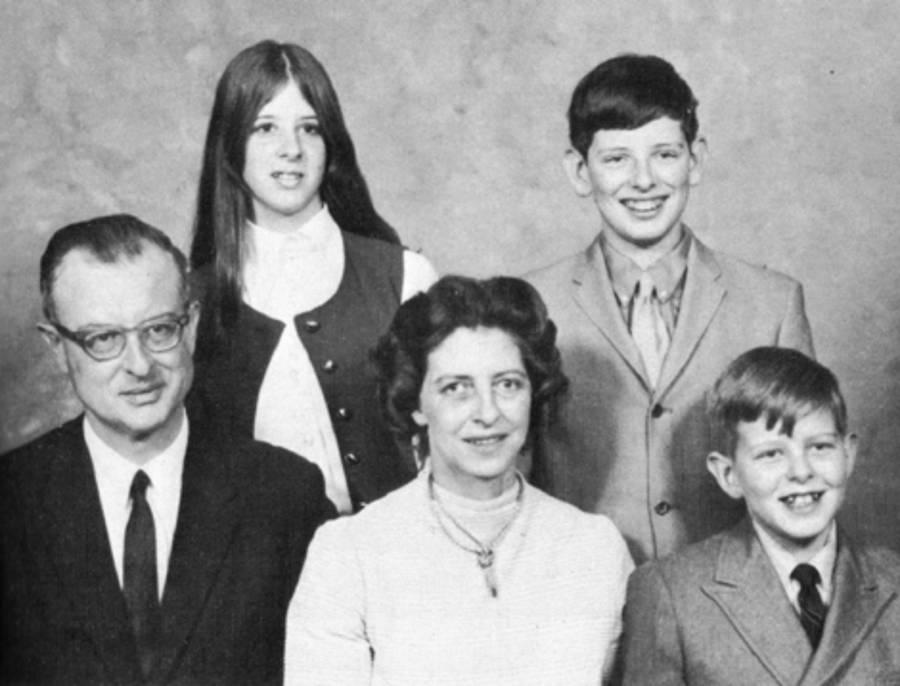Family annihilators commit unspeakable crimes, but men and women perpetrators tend to target their victims differently – and with different motives.
◊
In 2018, in Frederick, Colorado, Shanann Watts and her two daughters, Bella and Celeste, were reported missing. Only a few days later, Chris Watts, Shanann’s husband and father of the children, was distraught as he pleaded on the local news for his family to be returned home safely. The tragedy shook the town of Frederick to its core, and its people wanted to bring the culprit, if there was one, to justice. How could they have imagined that Watts himself had strangled his pregnant wife and smothered his daughters?
Andrea Yates and her husband Rusty were living in Clear Lake City, Texas, a suburb of Houston in 2001. One day, Andrea called the police in a panic, saying over and over again that she needed an officer, but wouldn’t specify why. Then she called Rusty and told him to come home immediately. Horrifyingly, when help arrived, it was discovered that Andrea had drowned her five children, one by one, in a bathtub. They ranged in age from six months to seven years old. No one could understand why she had done such a thing.
These are just two of many incidents in which people murder members of their own families. Cases like these are brutal and deeply disturbing, and they have been given a powerful term: family annihilation. The words are heavy and fitting, for they carry the weight of lives lost and press down on the chests of the perpetrators.
In 1999, a U.S. Department of Justice study indicated that parents committed 61% of murders of children under the age of five. Mothers were mainly responsible for children killed during infancy, while fathers were more likely to have murdered their children aged eight or older.
Stories of such murderers and their victims are not for the faint of heart. Hardly a day goes by without another of these horrific crimes appearing in the news. And, it seems, the more intense and upsetting the case, the more people tune in. The stories are tailor-made for tabloids and talk shows. Our inability to wrap our heads around such shocking acts of violence is what sets family annihilators apart from other murderers – and what rivets our attention.
Family annihilation murders fall into two categories: familicide and filicide. In cases of familicide, perpetrators kill several close family members, usually children, spouses, and other relatives, in rapid succession. The perpetrator is almost always a man. Filicide involves the murder of children by one of their parents, and in many cases the murderers are women. In both of these types of mass murder, entire families are wiped out.
Let’s dig deeper into several cases of family annihilation.
Watch Killer in the Family on MagellanTV.
3 Cases of Fathers Who Killed Their Families
What could possibly possess a man like Chris Watts to annihilate his own family? When you look at the picture below, it’s even more perplexing – the family looks so happy together, and Chris appears to be such a normal dad. Of course, Watts attempted to play off of such perceptions. At first, after the bodies were discovered, he tried to blame the murders of his daughters on his wife. When he saw the dead children, he claimed, he flew into a rage and killed Shanann. Under interrogation, though, he later admitted his account was false. Revealed by Shannan’s family lawyer, Steven Lambert, Watts admitted to strangling his wife after the two of them got into a verbal altercation once Chris admitted he was cheating on her and wanted a divorce.

Watts family (Credit: Shanann Watts/Instagram)
Then there’s the case of Scott Peterson, which was so sensational and heavily covered in the news media that it inspired the famous book-turned-movie Gone Girl. Like the Watts couple, Scott and Laci Peterson appeared to be a match made in heaven. But hell came soon enough when Scott murdered Laci, who was pregnant at the time, in 2002. Why? Like Chris Watts, Scott was cheating on his wife. In addition, he was financially strapped and seems to have had a fear of fatherhood. He was convicted of the first-degree murder of Laci and the second-degree murder of their unborn son in 2004.
Unsurprisingly, family annihilators didn’t appear out of nowhere in the 21st century. They’ve been around for a while. John List, an affluent banker in Jersey City, New Jersey, murdered his entire family, including his mother, in a single day in 1971. Apparently, he was having financial difficulties and believed wiping his family out would save them from the “embarrassment” of poverty. And a perverse interpretation of his faith somehow led him to think he was sending his victims on to Heaven. After the killings, List disappeared. He was discovered and arrested 18 years later. Chillingly, he was living an outwardly normal life in a suburb of Denver with a new wife.
Why Would a Man Murder His Family?
Professor Jack Levin of Northeastern University argues that family annihilators who commit familicide have a common profile. They are usually middle-aged men who are good providers and appear from the outside to be loving and devoted husbands and fathers. Levin says, “He quite often tends to be quite isolated. He is often profoundly dedicated to his family but has few friends of his own or a support system [outside] the family.” In addition, such fathers often have external motivators such as extramarital affairs or financial problems.

John List and his family (Credit: Wikimedia Commons)
Dr. Neil Websdale, director of the National Domestic Violence Fatality Review Initiative says that roughly 95% of perpetrators of familicide are male, and “male shame” is a deeply rooted problem that underlies many such crimes. The killers’ inability to accept or face failures or obstacles in their life like losing a job, not being able to pay the bills (as in the cases of Scott Peterson and John List), or inadequacy in performance as the “man of the house” can fuel this shame. Instead of facing these problems, or allowing them to come to the surface, they murder their families to hide from the failures in their lives.
Levin says these mass murders are not spontaneous, but instead, they are executions. They are well-planned over for a long period of time. That’s part of what makes the crimes so heinous: Even after much deliberation, killing innocent family members, in the eyes of the perpetrators, seems to be the best option.
3 Cases of Mothers Who Killed Their Kids
Residents of Clear Lake City were horrified when they learned the Yates children had been murdered. Their mother Andrea seemed to love them, as all parents are supposed to. But she was hiding some dark and disturbing secrets that weren’t immediately apparent to her neighbors.
According to her lawyers, Andrea suffered from severe postpartum depression and delusional psychosis – she actually believed that Satan had taken her soul. ??Though many at first dismissed this defense as an attempt to avoid imprisonment for life, investigators discovered that Andrea had a history of nervous breakdowns and had not been taking the medications prescribed to help manage her mental issues. Andrea’s doctor had even warned Rusty Yates not to leave his wife alone with their kids. Andrea was initially convicted and sentenced to life in prison, but she was eventually acquitted by reason of insanity. She has been confined to a mental hospital ever since.
Jessica Edens, a South Carolina mother of two, shot and killed her estranged husband’s girlfriend in 2017. Then, she drove back to her home and fatally shot her own kids. Her son, nine-year-old Hayden King, and her daughter, five-year-old Harper Edens, died together in the back of Jessica’s SUV. Afterward, she turned the gun on herself, committing suicide.

Harper Edens (Source: Dillard Funeral Home)
Investigators say Jessica and her husband Ben Edens were going through a messy divorce and custody battle, and Jessica committed the murders so there would be “everlasting consequences for her husband.” She used her kids as punishment for her husband and even wrote in one of three suicide notes, “To Ben, you have caused me more pain than I’ve ever been in in my life. You have caused my children pain. I hate you. I hope you rot one day for what you have done to me and my kids. You can no longer hurt us. We are at peace. I hope you live with pain and shame and guilt for the rest of your life.”
In September of 2016, an AMBER alert was sent regarding the whereabouts of six-year-old boy Rene Pasztor and his seven-year-old sister Liliana. Due to substance abuse problems, the mother of the children, Amber Pasztor, had lost custody of them, and in Fort Wayne, Indiana, police feared she might have abducted them. Their suspicions were correct. Pasztor had taken the two kids from their father’s house and smothered them to death in the backseat of her car.

Amber Pasztor (Credit: Elkhart County Sheriff Department)
Her reasons? She wanted to send her kids to a “better place,” as she was worried members of a drug cartel would torture and kill her children. Pasztor has been described as mentally unstable and evil by relatives. She was convicted of the murders and sentenced to 130 years in prison, where she receives mental health treatment.
Why Would a Mother Kill Her Kids?
While fathers who annihilate their families are usually motivated by external factors, mothers who murder their children often show signs of major mental illness such as depression or psychosis, according to Dr. Phillip Resnick, a professor of psychiatry at Case Western Reserve University. Dr. Resnick, who has studied filicide extensively, says mothers usually go through states of psychosis that support their violent and murderous ideas. The murders themselves tend to result from some combination of misguided altruism (as in Rene Pasztor’s twisted rationalization); fatal maltreatment of the children, leading to death; the children being unwanted; spousal revenge (as in Jessica Edens’s rage); and/or acutely psychotic filicide (as exhibited by Andrea Yates).
According to the FBI, approximately 450 children are murdered by their parents each year in the U.S., but the crime is also committed in other countries.
Perhaps unsurprisingly, many of the mothers who kill their kids were, at some point in their lives, victims themselves. According to a 2007 study published in World Psychiatry, the mothers who committed filicide were often socially isolated, victims of domestic violence or other relationship problems, full-time caregivers, and/or poor. In addition, some of these women were intellectually challenged and had suffered trauma themselves.
The Killers’ Need for Escape
Each of the fathers and mothers depicted in this article had specific motives for murdering their families in cold blood. But they had one factor in common: the need to escape – escape from reality into psychotic fantasy, escape from financial burdens, from unwanted children and responsibilities, from their old relationships, escape from their fears of the future. Whatever the specifics, they couldn’t bear the lives in which they felt trapped.
Although no sane person would try to justify the actions of these family annihilators, you might feel the smallest bit of sympathy for people who were driven into such extreme emotional turmoil that escape through murder seemed the only option. Their stories are cautionary tales about the capacity of some individuals to commit the most unnatural of crimes – the mass murder of their own flesh and blood.
Ω
Kellyn Doerr is a contributing writer for MagellanTV. Originally from Rhode Island, she is a recent graduate of the University of Vermont. Kellyn recently moved to New York City with friends and her cat Tiberius. She enjoys watching movies, eating out, and dominating a game of pool.
Title Image credit: Pixabay

